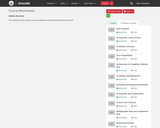
This module contains both course worksheets in both pdf and MS Word format.
- Subject:
- Measurement and Data
- Statistics and Probability
- Material Type:
- Module
- Author:
- Kameswarrao Casukhela
- Date Added:
- 08/29/2018

This module contains both course worksheets in both pdf and MS Word format.
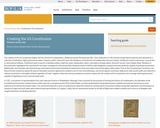
This collection uses primary sources to explore the creation of the US Constitution. Digital Public Library of America Primary Source Sets are designed to help students develop their critical thinking skills and draw diverse material from libraries, archives, and museums across the United States. Each set includes an overview, ten to fifteen primary sources, links to related resources, and a teaching guide. These sets were created and reviewed by the teachers on the DPLA's Education Advisory Committee.

This peer reviewed e-book is a must-read for nurses and other health professionals who strive to teach with creativity and excellence in clinical settings. Each chapter presents current evidence informed educational practice knowledge. Each topic is also presented with text boxes describing ‘Creative Strategies’ that clinical teachers from across Canada have successfully implemented. For those who are interested in background knowledge, the authors provided a comprehensive literature base. And, for those interested mainly in 'what to do,' the text box summaries offer step-by-step directions for creative, challenging activities that both new and experienced instructors can begin using immediately.
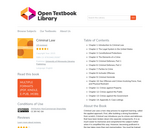
Criminal Law uses a two-step process to augment learning, called the applied approach. First, after building a strong foundation from scratch, Criminal Law introduces you to crimes and defenses that have been broken down into separate components. It is so much easier to memorize and comprehend the subject matter when it is simplified this way. However, becoming proficient in the law takes more than just memorization. You must be trained to take the laws you have studied and apply them to various fact patterns. Most students are expected to do this automatically, but application must be seen, experienced, and practiced before it comes naturally. Thus the second step of the applied approach is reviewing examples of the application of law to facts after dissecting and analyzing each legal concept. Some of the examples come from cases, and some are purely fictional. All the examples are memorable, even quirky, so they will stick in your mind and be available when you need them the most (like during an exam). After a few chapters, you will notice that you no longer obsess over an explanation that doesn’t completely make sense the first time you read it—you will just skip to the example. The examples clarify the principles for you, lightening the workload significantly.
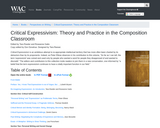
Critical Expressivism is an ambitious attempt to re-appropriate intellectual territory that has more often been charted by its detractors than by its proponents. Indeed, as Peter Elbow observes in his contribution to this volume, "As far as I can tell, the term 'expressivist' was coined and used only by people who wanted a word for people they disapproved of and wanted to discredit." The editors and contributors to this collection invite readers to join them in a new conversation, one informed by "a belief that the term expressivism continues to have a vitally important function in our field."

A perfect introduction to the exploding field of Data Science for the curious, first-time student. The author brings his trademark conversational tone to the important pillars of the discipline: exploratory data analysis, choices for structuring data, causality, machine learning principles, and introductory Python programming using open-source Jupyter Notebooks. This engaging read will allow any dedicated learner to build the skills necessary to contribute to the Data Science revolution, regardless of background.

This module includes information to help find, evaluate, adapt and share open educational resources to meet learning outcomes and objectives. The module also offers information on how to describe and organize OER to enable its discovery by future users.
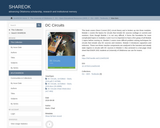
This book covers Direct Current (DC) circuit theory and is broken up into three modules. Module 1 covers the basics for circuits that include DC sources (voltage or current) and resistors. Even though Module 1 is not very difficult, it forms the foundation for more complicated topics in modules 2 and 3 so it is important to have a firm grasp of all Module 1 topics before moving on. Module 2 covers more difficult problem solving techniques for circuits that include only DC sources and resistors. Module 3 introduces capacitors and inductors. These non-linear reactive components are analyzed in the transient and steady state regions in circuits with DC sources in Module 3. Also annexed is a two-page cheat sheet that ENGR 2431 students at University of Oklahoma can use for exams.

Welcome to DC Electrical Circuit Analysis, an open educational resource (OER). The goal of this text is to introduce the theory and practical application of analysis of DC electrical circuits. It is offered free of charge under a Creative Commons non-commercial, share-alike with attribution license. For your convenience, along with the free pdf and odt files, print copies are available at a very modest charge. Check my web sites for links.

When you combine the sheer scale and range of digital information now available with a journalist’s "nose for news" and her ability to tell a compelling story, a new world of possibility opens up. With The Data Journalism Handbook, you’ll explore the potential, limits, and applied uses of this new and fascinating field.
This valuable handbook has attracted scores of contributors since the European Journalism Centre and the Open Knowledge Foundation launched the project at MozFest 2011. Through a collection of tips and techniques from leading journalists, professors, software developers, and data analysts, you’ll learn how data can be either the source of data journalism or a tool with which the story is told—or both.
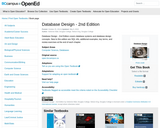
Database Design - 2nd Edition covers database systems and database design concepts. New to this edition are SQL info, additional examples, key terms and review exercises at the end of each chapter.

Note: The following text is a transcription of the Stone Engraving of the parchment Declaration of Independence (the document on display in the Rotunda at the National Archives Museum.) The spelling and punctuation reflects the original.
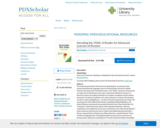
The materials presented in this book were developed for an advanced-level content-based Russian language course at Portland State University entitled “Russian Literature of the Twentieth Century: The 1920s.” Literature of this period is a major part of the Russian canon, but is notoriously difficult for learners of Russian to read in the original, due both to its stylistic complexity and the relative obscurity of its historical, political, and cultural references. And yet, this decade is crucial for understanding Russia – not only in the Soviet period, but also today. This was the period, when Mikhail Zoshchenko, Isaak Babel, Mikhail Bulgakov, and Andrei Platonov meticulously documented the birth of the “New Soviet Man,” his “newspeak” and Soviet bureaucratese; when Alexandra Kollontai, a Marxist revolutionary and a diplomat, wrote essays and fiction on the “New Soviet Woman”; when numerous satirical works were created; when Babel experimented with a literary representation of dialects (e.g.,Odessa Russian or Jewish Russian). These varieties of language have not disappeared. Bureaucrats still use some form of bureaucratese. Numerous contemporary TV shows imitate the dialects that Babel described. Moreover, Bulgakov’s “Heart of a Dog” gave rise, due largely to its film adaptation, to catch-phrases that still appear throughout contemporary Russian media, satirical contexts, and everyday conversation. Thus, the Russian literature of the 1920s does not belong exclusively to the past, but has relevance and interpretive power for the present, and language learners who wish to pursue a career in humanities, media analysis, analytical translation, journalism, or international relations must understand this period and the linguistic patterns it established.
The textbook is intended for adult learners, and contains language assignments that would, on the one hand, help students transition to ACTFL’s Advanced proficiency level (i.e., be able to create "narratives, descriptions, and summaries … using paraphrasing and elaboration” (ACTFL 2012: 12).), but at the same time promote meaningful engagement with literary texts. The assignments in this textbook are multilevel ones, and thus offer a solution for multilevel classes that include literate heritage Russian speakers, Intermediate High, Advanced, or even Superior-level readers.
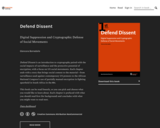
Defend Dissent is an introduction to cryptography paired with the social impacts of surveillance and the protective potential of encryption, with a focus on US social movements. Each chapter ends with a story that brings social context to the material—from surveillance used against contemporary US protests to the African National Congress’s use of partially manual encryption in fighting apartheid in South Africa in the 80s.
This book can be read linearly, or you can pick and choose what you would like to learn about. Each chapter is prefaced with what you should read first (for background) and concludes with what you might want to read next.
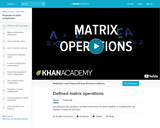
Sal discusses the conditions of matrix dimensions for which addition or multiplication are defined. Created by Sal Khan.
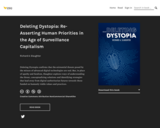
Deleting Dystopia confirms that the existential threats posed by the misuse of advanced digital technologies are real. But, in place of apathy and fatalism, Slaughter explores ways of understanding the threat, conceptualising solutions and identifying strategies that lead away from digital authoritarian futures towards those funded on humanly viable values and practices.
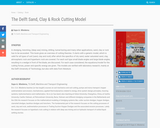
In dredging, trenching, (deep sea) mining, drilling, tunnel boring and many other applications, sand, clay or rock has to be excavated. This book gives an overview of cutting theories. It starts with a generic model, which is valid for all types of soil (sand, clay and rock) after which the specifics of dry sand, water saturated sand, clay, atmospheric rock and hyperbaric rock are covered. For each soil type small blade angles and large blade angles, resulting in a wedge in front of the blade, are discussed. For each case considered, the equations/model for the cutting forces, power and specific energy are given. The models are verified with laboratory research, mainly at the Delft University of Technology, but also with data from literature.
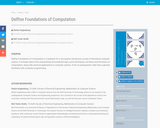
Delftse Foundations of Computation is a textbook for a one quarter introductory course in theoretical computer science. It includes topics from propositional and predicate logic, proof techniques, set theory and the theory of computation, along with practical applications to computer science. It has no prerequisites other than a general familiarity with computer programming.

Amongst the novel objects that attracted my attention during my stay in the United States, nothing struck me more forcibly than the general equality of conditions. I readily discovered the prodigious influence which this primary fact exercises on the whole course of society, by giving a certain direction to public opinion, and a certain tenor to the laws; by imparting new maxims to the governing powers, and peculiar habits to the governed. I speedily perceived that the influence of this fact extends far beyond the political character and the laws of the country, and that it has no less empire over civil society than over the Government; it creates opinions, engenders sentiments, suggests the ordinary practices of life, and modifies whatever it does not produce. The more I advanced in the study of American society, the more I perceived that the equality of conditions is the fundamental fact from which all others seem to be derived, and the central point at which all my observations constantly terminated.

The Americans live in a democratic state of society, which has naturally suggested to them certain laws and a certain political character. This same state of society has, moreover, engendered amongst them a multitude of feelings and opinions which were unknown amongst the elder aristocratic communities of Europe: it has destroyed or modified all the relations which before existed, and established others of a novel kind. The—aspect of civil society has been no less affected by these changes than that of the political world. The former subject has been treated of in the work on the Democracy of America, which I published five years ago; to examine the latter is the object of the present book; but these two parts complete each other, and form one and the same work.